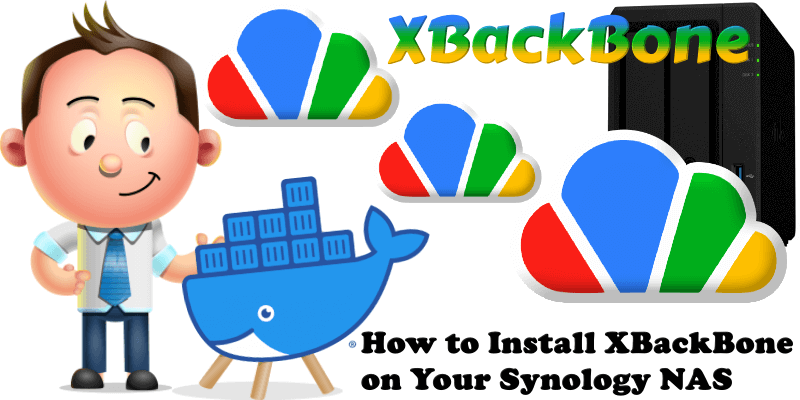
XBackBone is a simple and lightweight PHP file manager that supports the instant sharing tool ShareX and *NIX systems. It supports uploading and displaying images, GIF, video, code, formatted text, pdf, and file downloading and uploading. Also have a web UI with multi user management, media gallery and search support. In this step by step guide I will show you how to install XBackBone on your Synology NAS using Docker.
This guide works perfectly with the latest XBackBone v3.8.1 release.
STEP 1
Please Support My work by Making a Donation.
STEP 2
Install Container Manager via Synology “Package Center”. If you run an older DSM version (under 7.2), search for Docker instead of Container Manager.
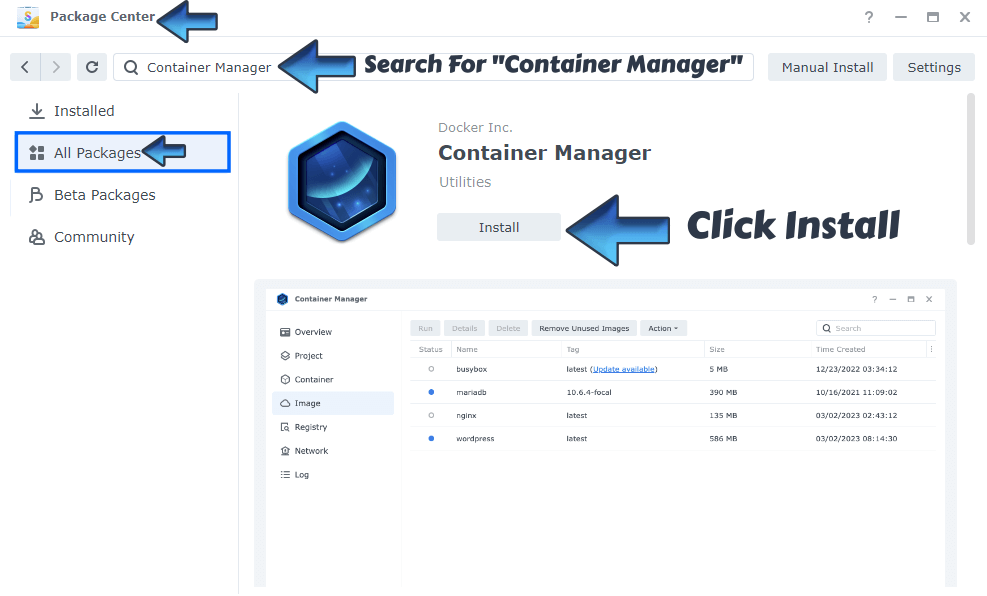
STEP 3
Install Text Editor via Synology “Package Center”.
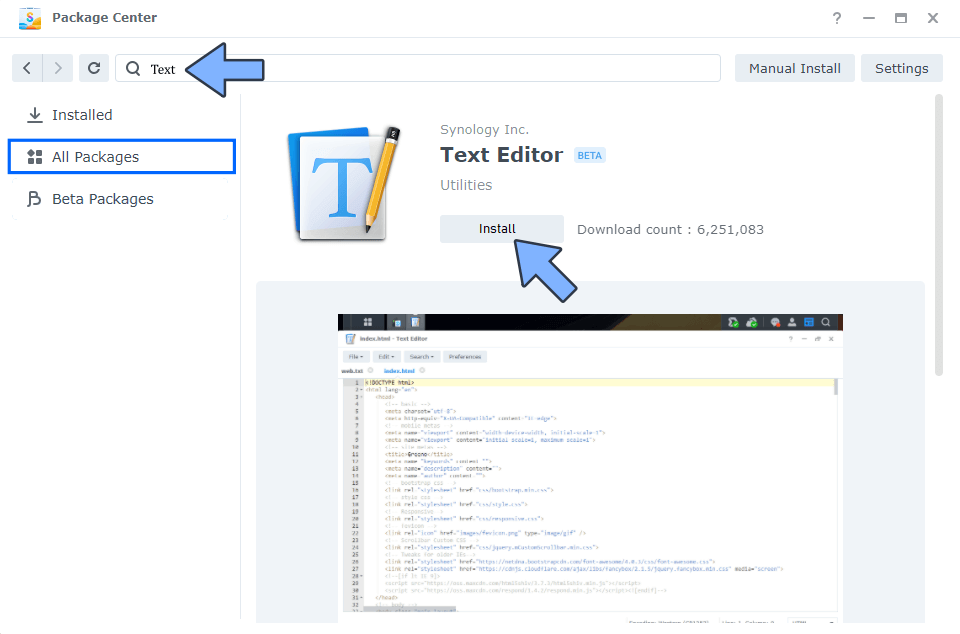
STEP 4
Make sure you have a synology.me Wildcard Certificate. Follow my guide to get a Wildcard Certificate. If you already have a synology.me Wildcard certificate, skip this STEP.
STEP 5
Go to Control Panel / Login Portal / Advanced Tab / click Reverse Proxy. Follow the instructions in the image below.

STEP 6
Now click the “Create” button. Follow the instructions in the image below.
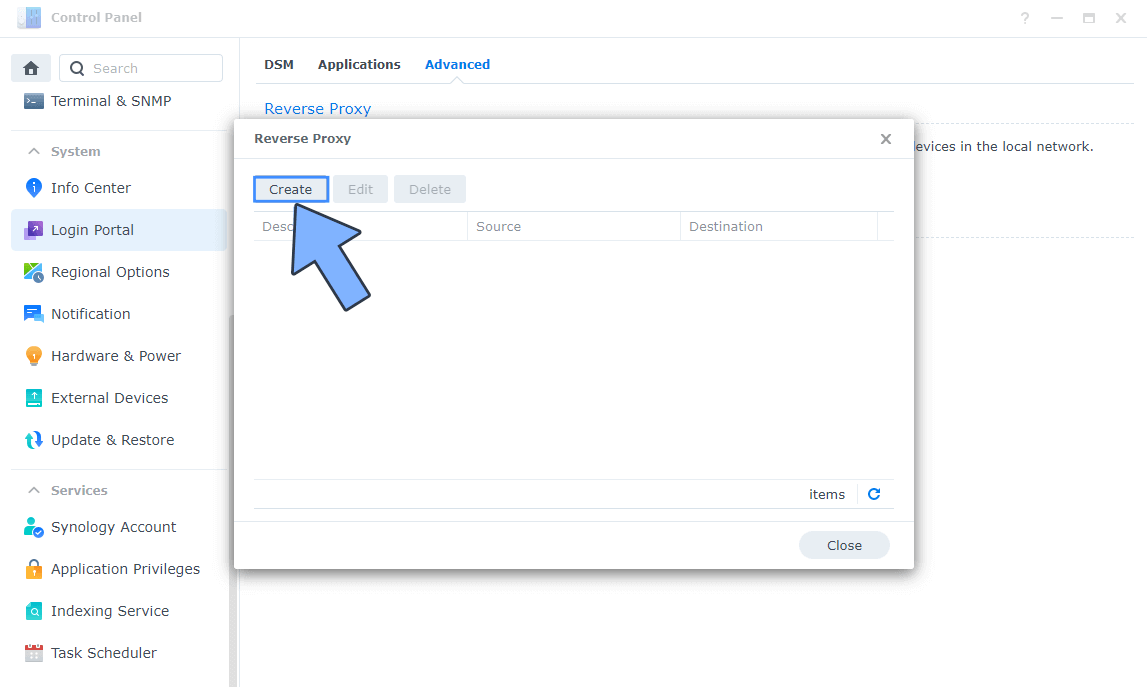
STEP 7
After you click the Create button, the window below will open. Follow the instructions in the image below.
On the General area, set the Reverse Proxy Name description: type in XBackBone. After that, add the following instructions:
Source:
Protocol: HTTPS
Hostname: xbackbone.yourname.synology.me
Port: 443
Check Enable HSTS
Destination:
Protocol: HTTP
Hostname: localhost
Port: 8522
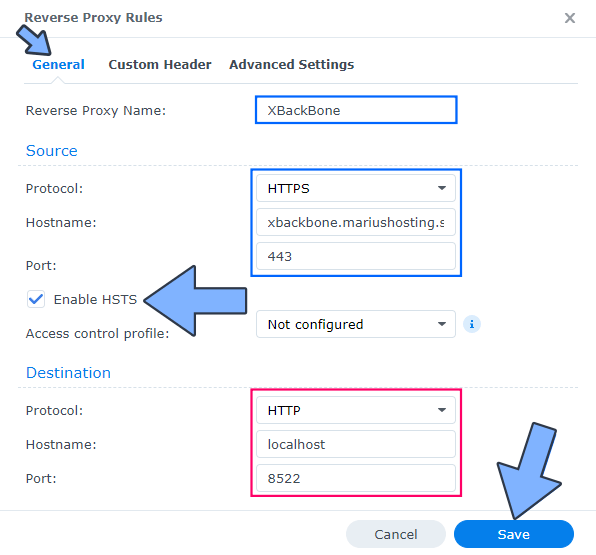
STEP 8
On the Reverse Proxy Rules click the Custom Header tab. Click Create and then, from the drop-down menu, click WebSocket. After you click on WebSocket, two Header Names and two Values will be automatically added. Click Save. Follow the instructions in the image below.

STEP 9
Go to Control Panel / Network / Connectivity tab/ Check Enable HTTP/2 then click Apply. Follow the instructions in the image below.
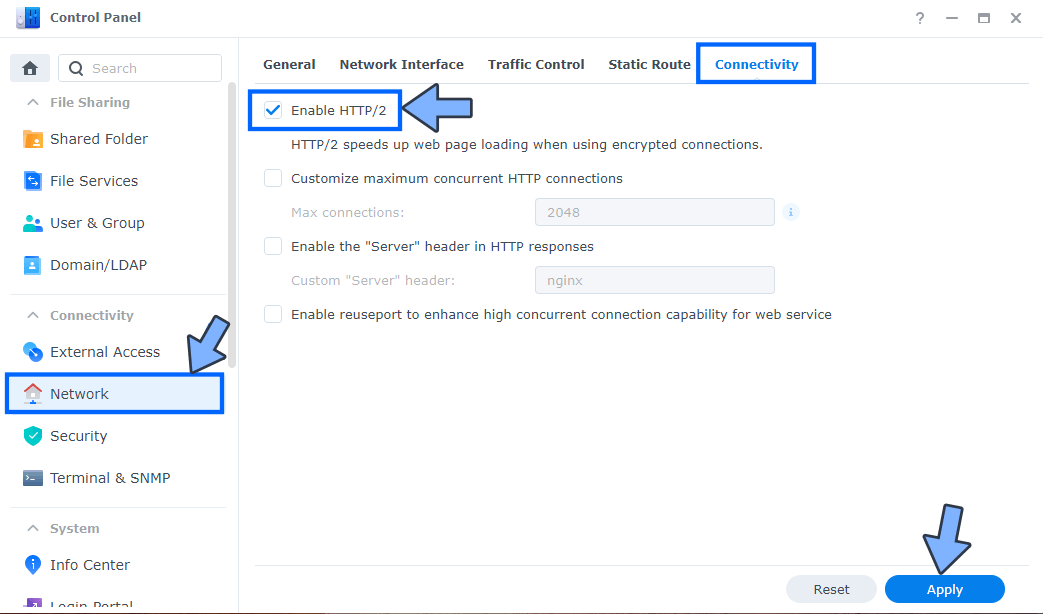
STEP 10
Go to Control Panel / Security / Advanced tab/ Check Enable HTTP Compression then click Apply. Follow the instructions in the image below.
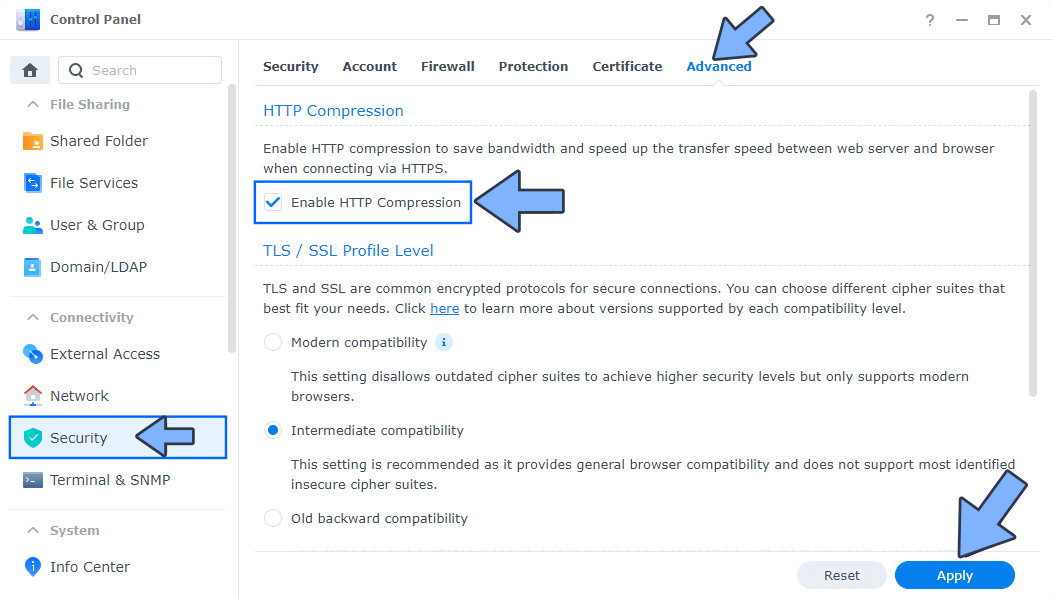
STEP 11
Go to File Station and open the docker folder. Inside the docker folder, create one new folder and name it xbackbone. Follow the instructions in the image below.
Note: Be careful to enter only lowercase, not uppercase letters.
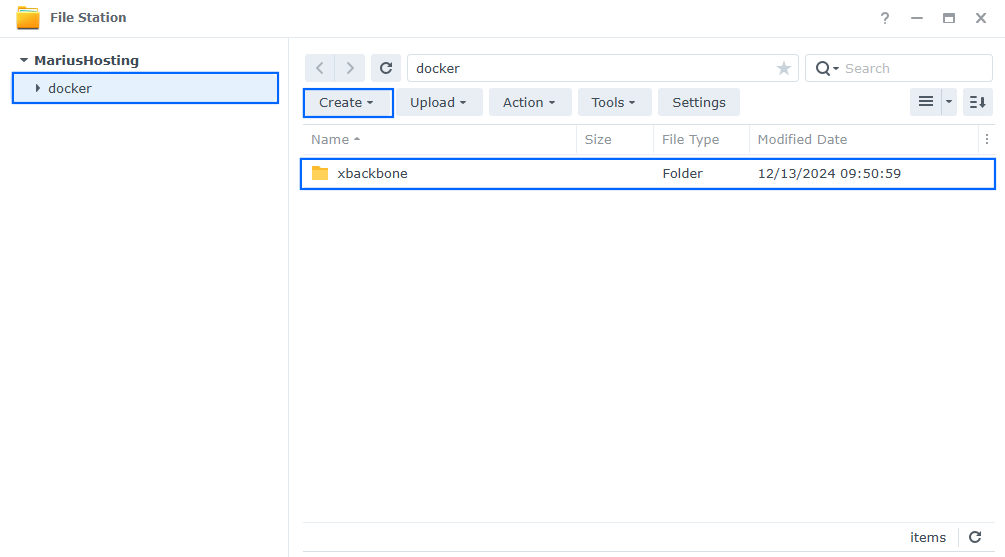
STEP 12
Go to Control Panel / Task Scheduler / Create / Scheduled Task / User-defined script. Follow the instructions in the images below.
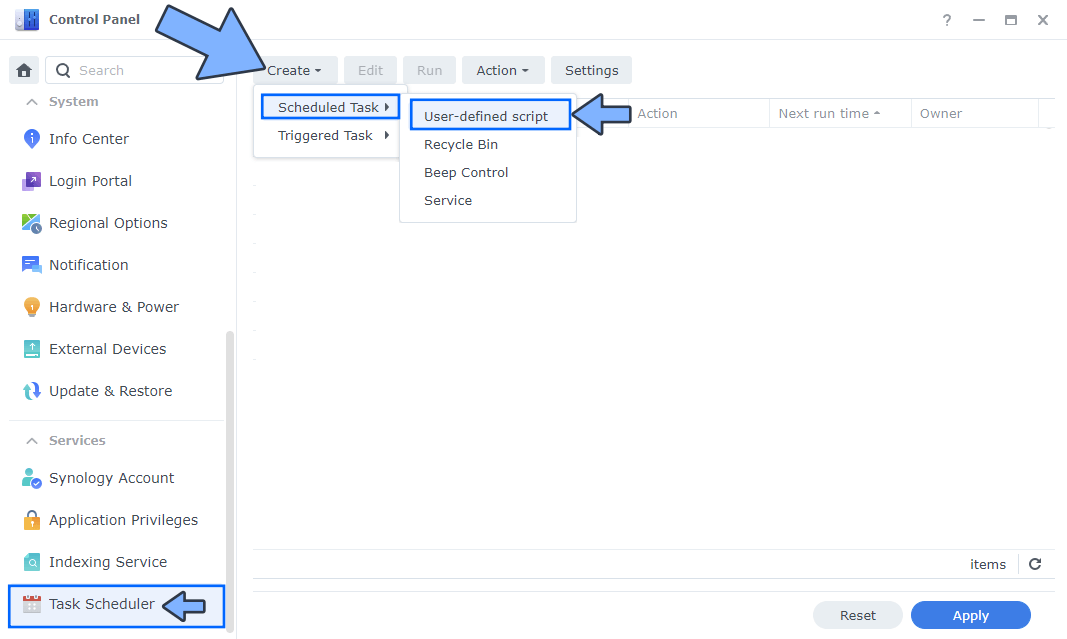
STEP 13
Once you click on User-defined script a new window will open. Follow the instructions below:
- General: In the Task field type in Install XBackBone. Uncheck “Enabled” option. Select root User.
- Schedule: Select Run on the following date then select “Do not repeat“.
- Task Settings: Check “Send run details by email“, add your email then copy paste the code below in the Run command area. After that click OK.
docker run -d --name=xbackbone \ -p 8522:80 \ -p 4443:443 \ -e PUID=1026 \ -e PGID=100 \ -e TZ=Europe/Bucharest \ -v /volume1/docker/xbackbone:/config \ --restart always \ ghcr.io/linuxserver/xbackbone
Note: Before you paste the code above in the Run command area below, change the value numbers for PUID and PGID with your own values. (Follow my step by step guide on how to do this.)
Note: Before you paste the code above in the Run command area below, change the value for TZ (Select your current Time Zone from this list).
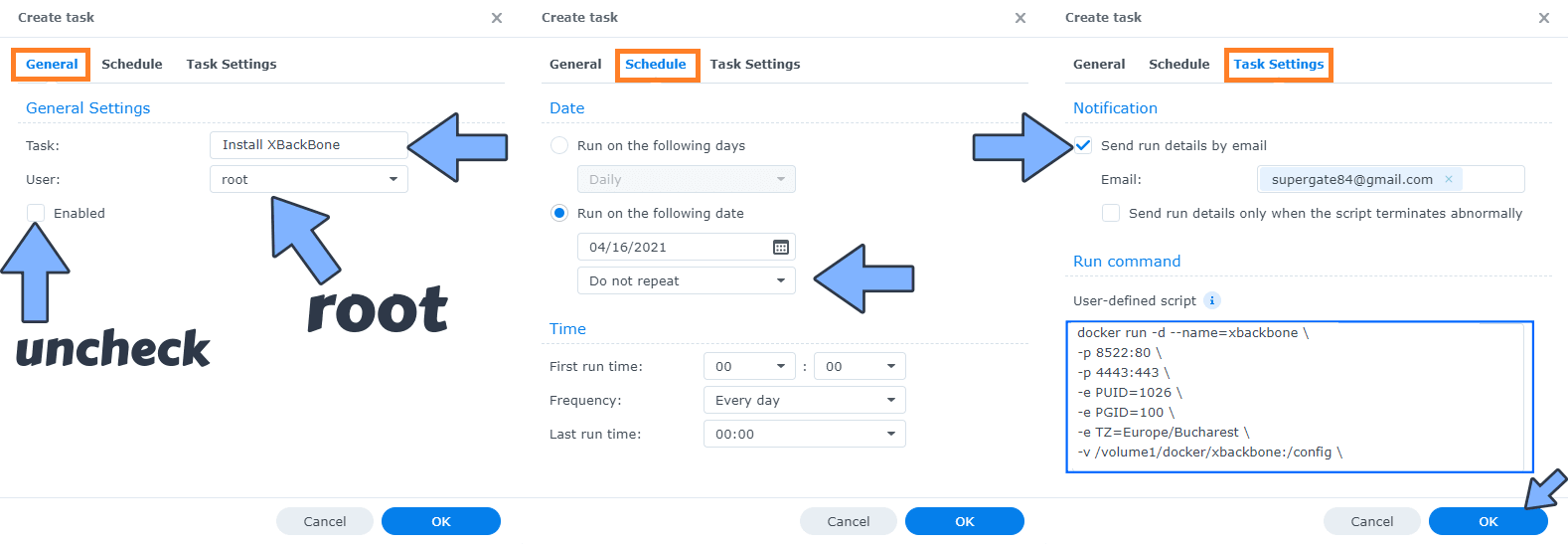
STEP 14
After you click OK on STEP 13 a new warning pop up window will open. Click OK.
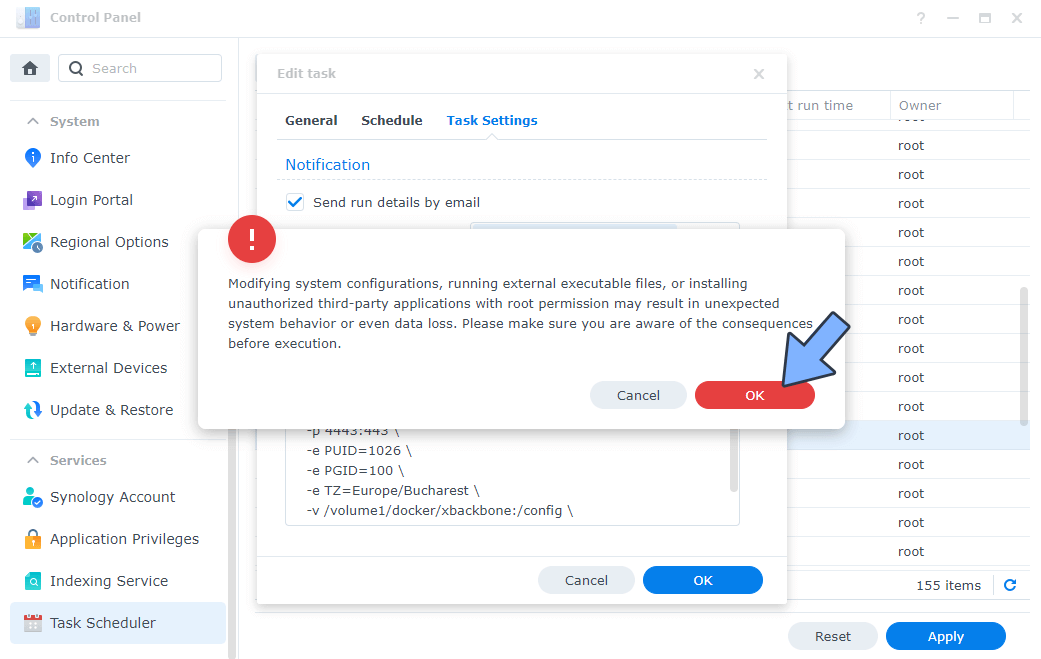
After you click OK, type in your DSM Password then click Submit. Follow the instructions in the image below.
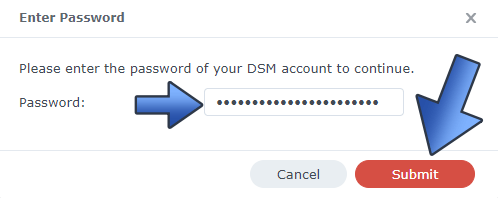
STEP 15
After you click Submit on STEP 14, select your “Install XBackBone” Task then click the “Run” tab. You will be asked to run Install XBackBone – click OK. Follow the instructions in the image below.
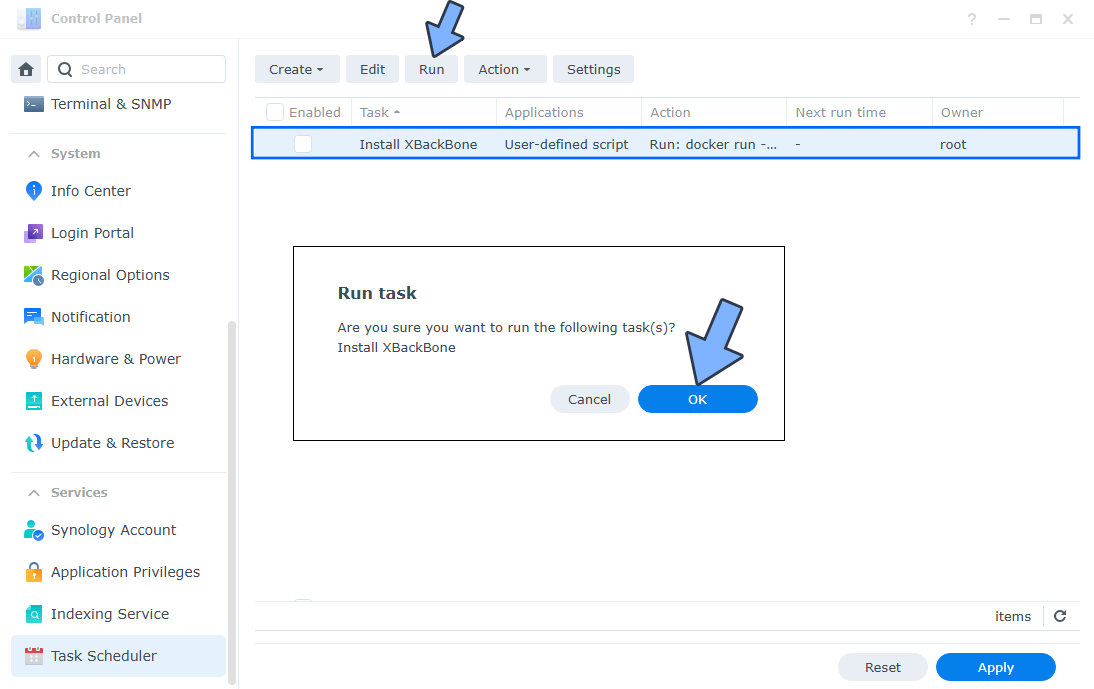
STEP 16
🟢Please Support My work by Making a Donation. Almost 99,9% of the people that install something using my guides forget to support my work, or just ignore STEP 1. I’ve been very honest about this aspect of my work since the beginning: I don’t run any ADS, I don’t require subscriptions, paid or otherwise, I don’t collect IPs, emails, and I don’t have any referral links from Amazon or other merchants. I also don’t have any POP-UPs or COOKIES. I have repeatedly been told over the years how much I have contributed to the community. It’s something I love doing and have been honest about my passion since the beginning. But I also Need The Community to Support me Back to be able to continue doing this work.
STEP 17
Now open your browser and type in your HTTPS/SSL certificate https://xbackbone.yourname.synology.me in my case https://xbackbone.mariushosting.synology.me – If everything goes right, you will see the XBackBone installation page. In the Base URL field, type in https:// followed by your synology.me DDNS name instead of http:// – Add your own Admin email and your own Admin password, then click Install. Follow the instructions in the image below.
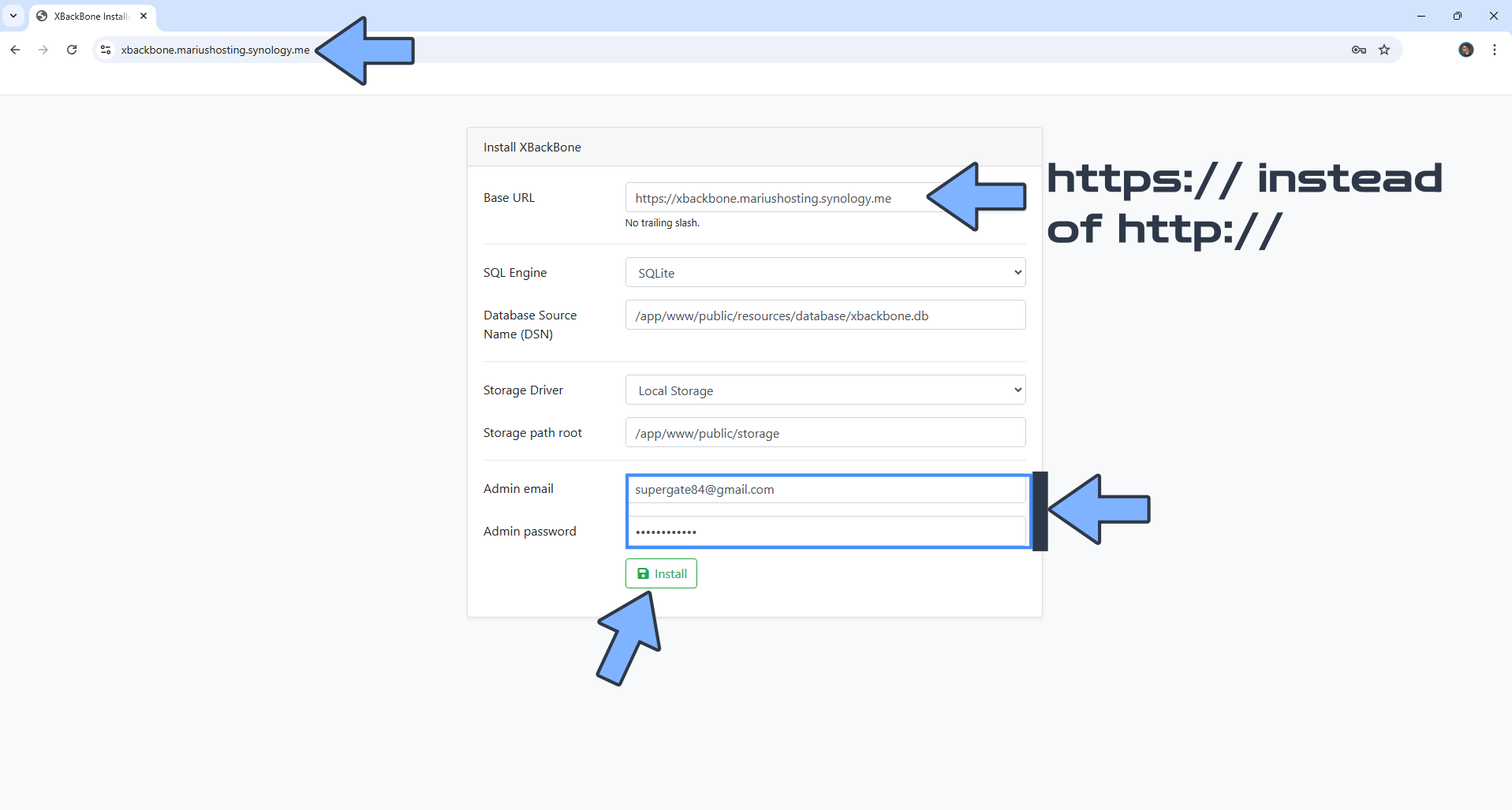
STEP 18
After you click Install at STEP 17, the installation process will take some minutes. After the installation is completed, you will be prompted to add your own Admin email and Admin password that you have previously created at STEP 17. Click Login. Follow the instructions in the image below.
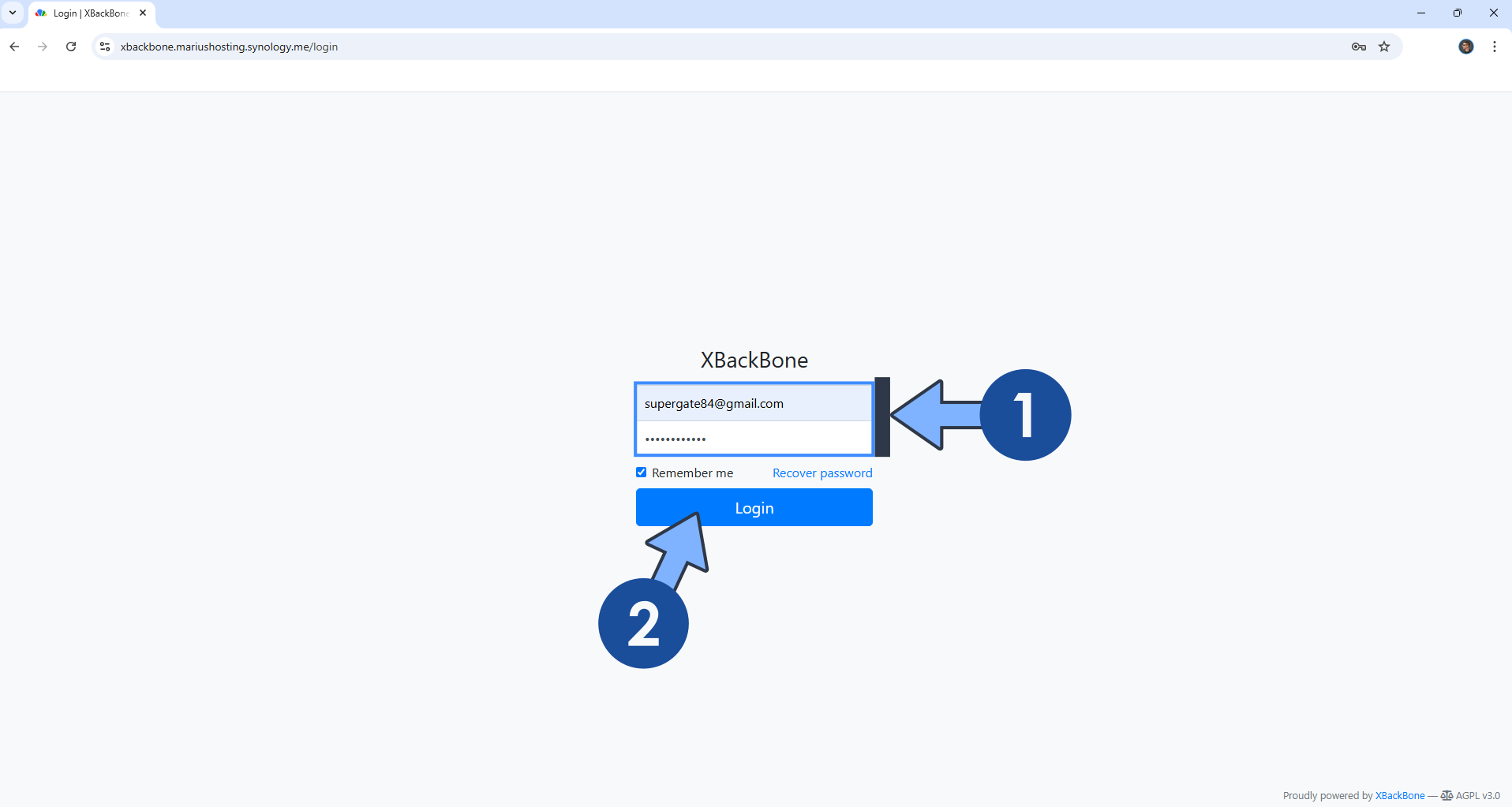
STEP 19
Your XBackBone dashboard will look like this. Go to the next step.
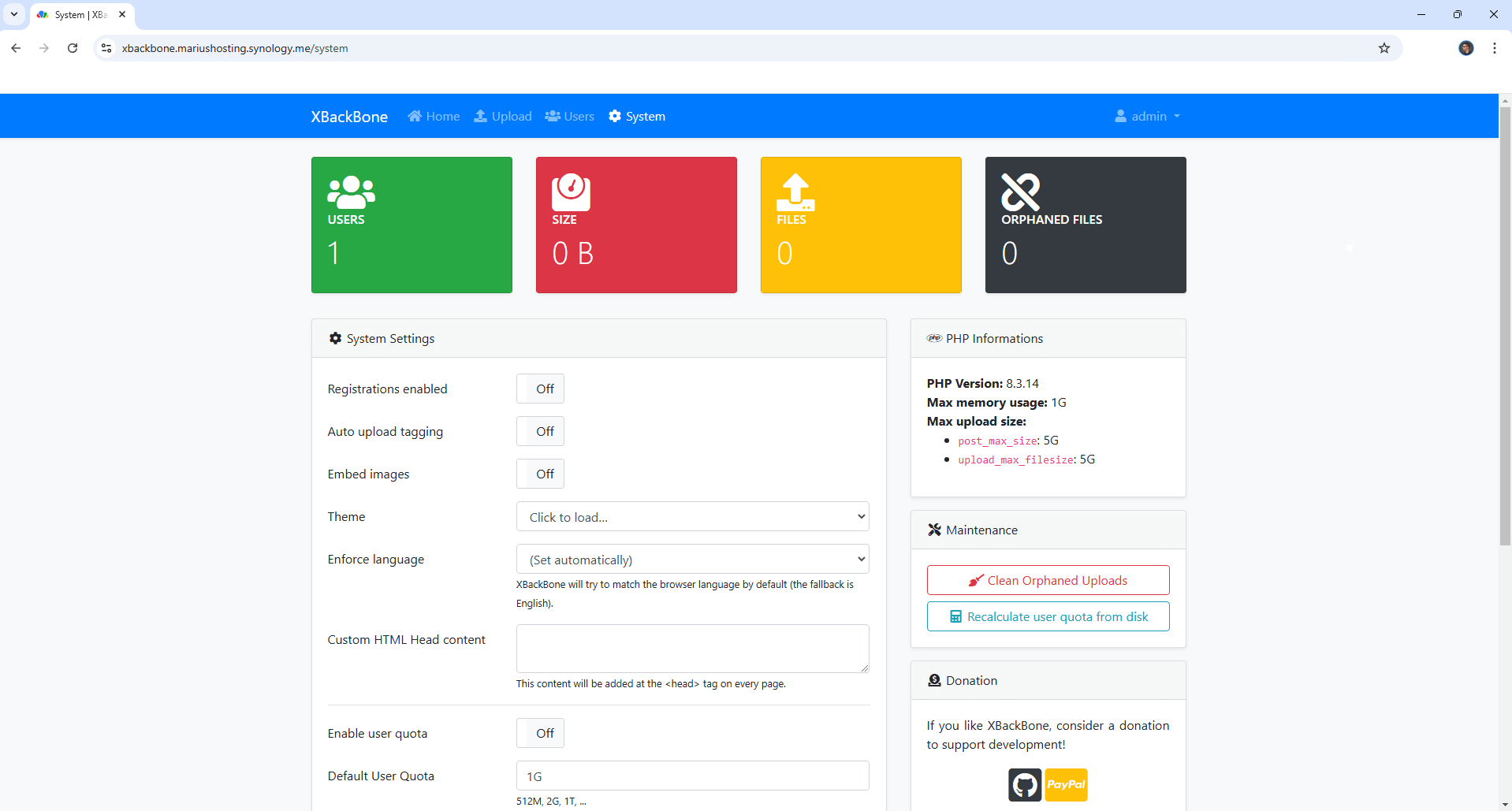
STEP 20
Go to File Station / Docker / xbackbone / php folder
Double click on the php-local.ini file. Follow the instructions in the image below.
Note: If you can’t open the php-local.ini file, this means you haven’t followed STEP 3 in this article.
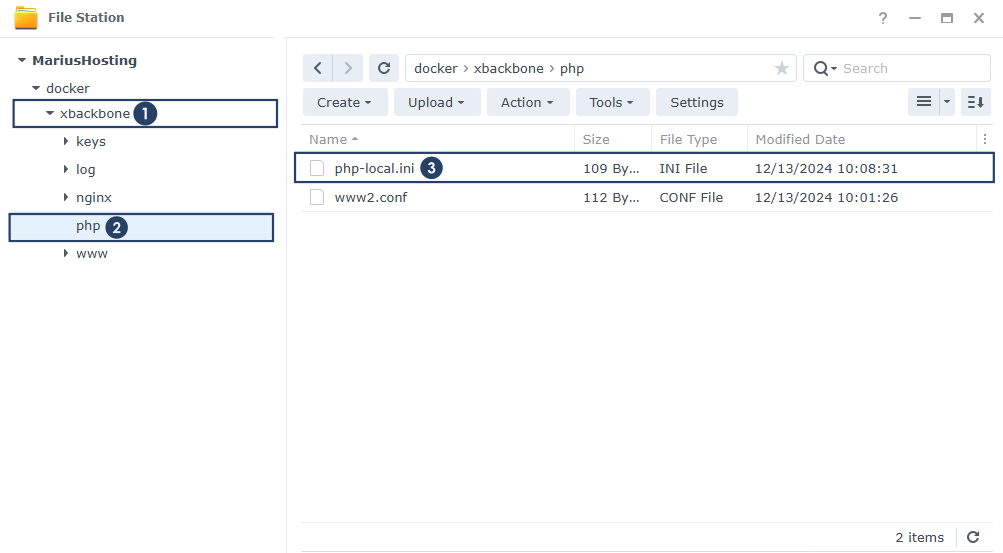
STEP 21
After the first line, copy paste these lines below, then save the file. Follow the instructions in the image below.
upload_max_filesize = 5G
post_max_size = 5G
memory_limit = 1G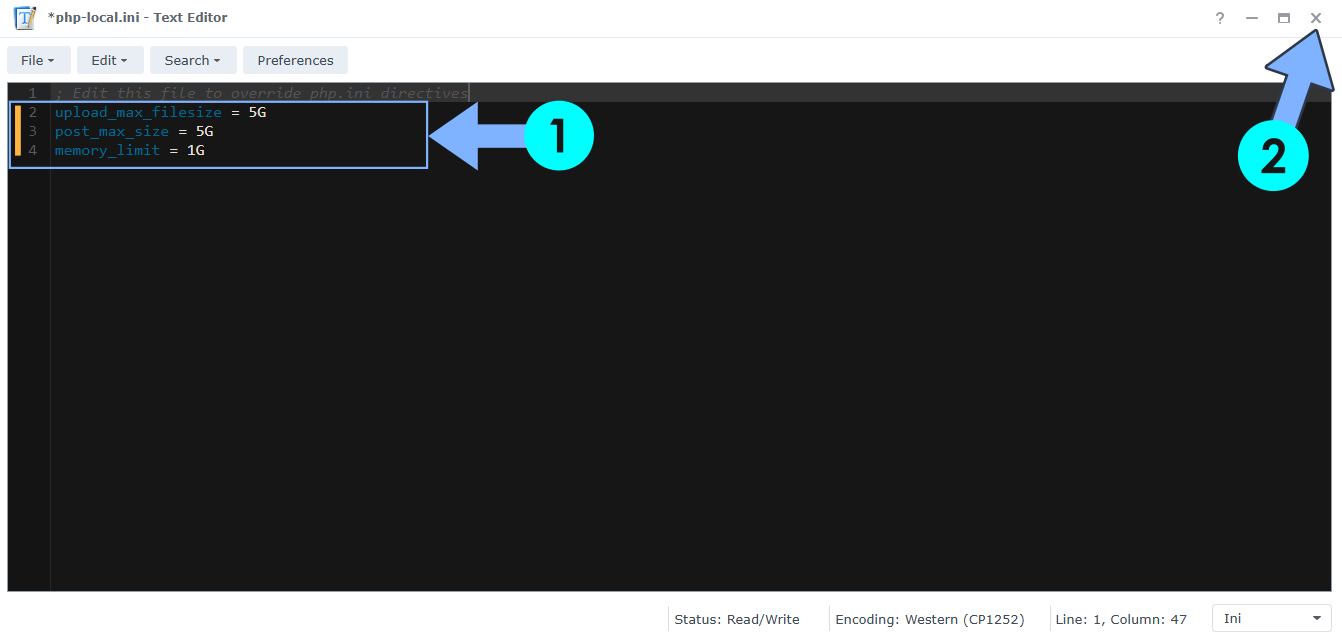
STEP 22
To apply the settings, Restart your XbackBone container in Docker or Container Manager Package / Container / Select your XBackBone container, right click, then click Restart. Follow the instructions in the image below.
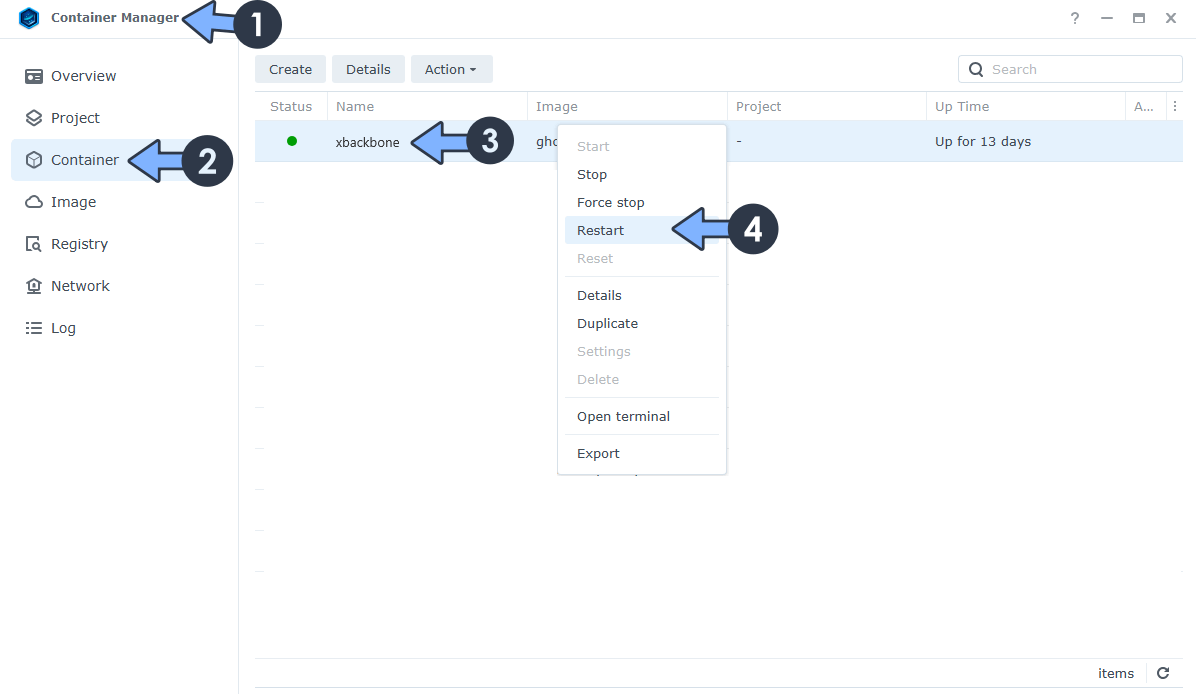
STEP 23
On the System tab, the three parameters, post_max_size, upload_max_filesize and memory_limit, are now showing the values that you have previously added at STEP 21. This change allows you to upload 5GB files instead of 2MB. You can easily change your Theme to Dark. Follow the instructions in the image below.
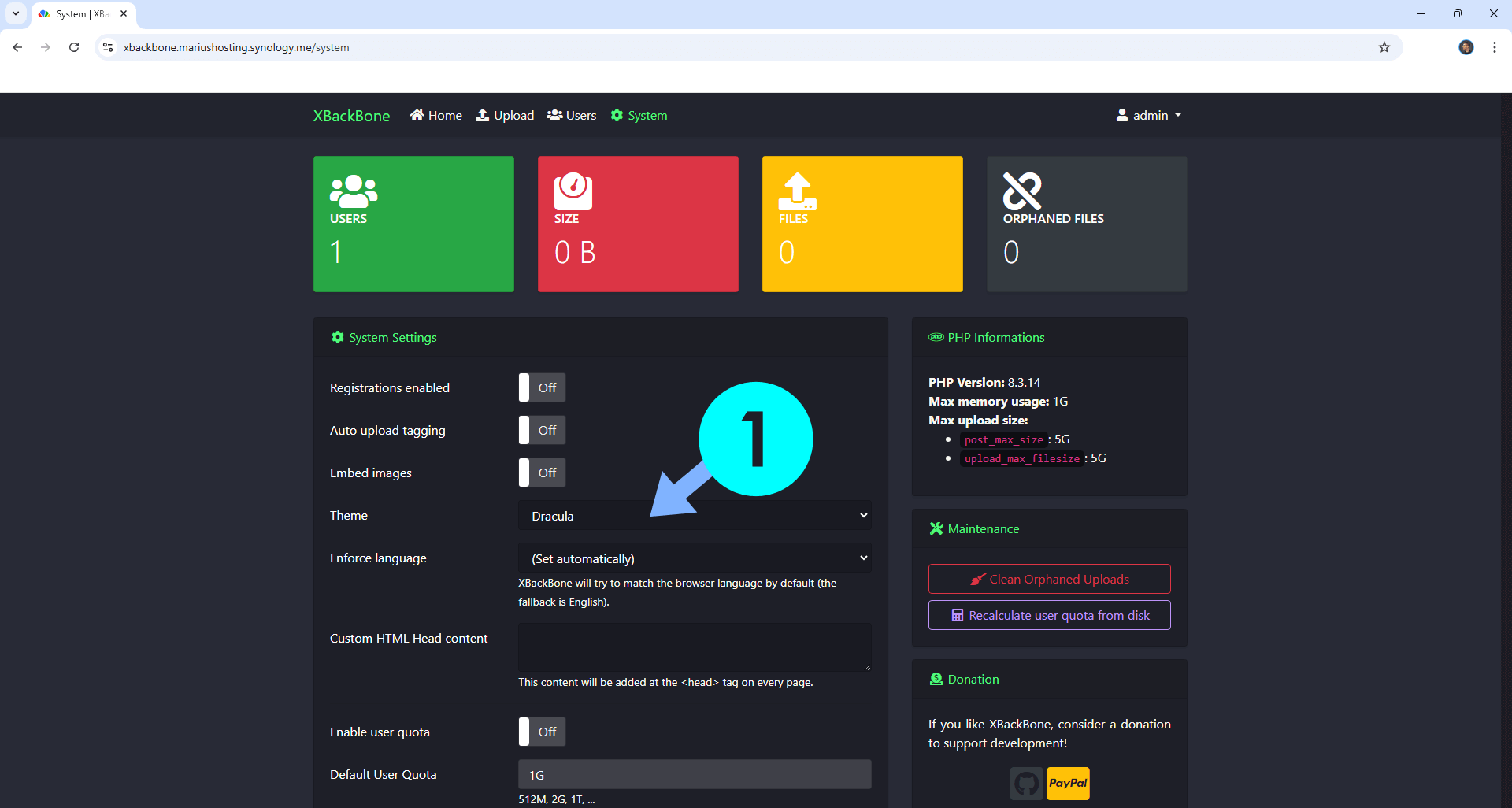
STEP 24
Upload some files from your computer. Follow the instructions in the image below.
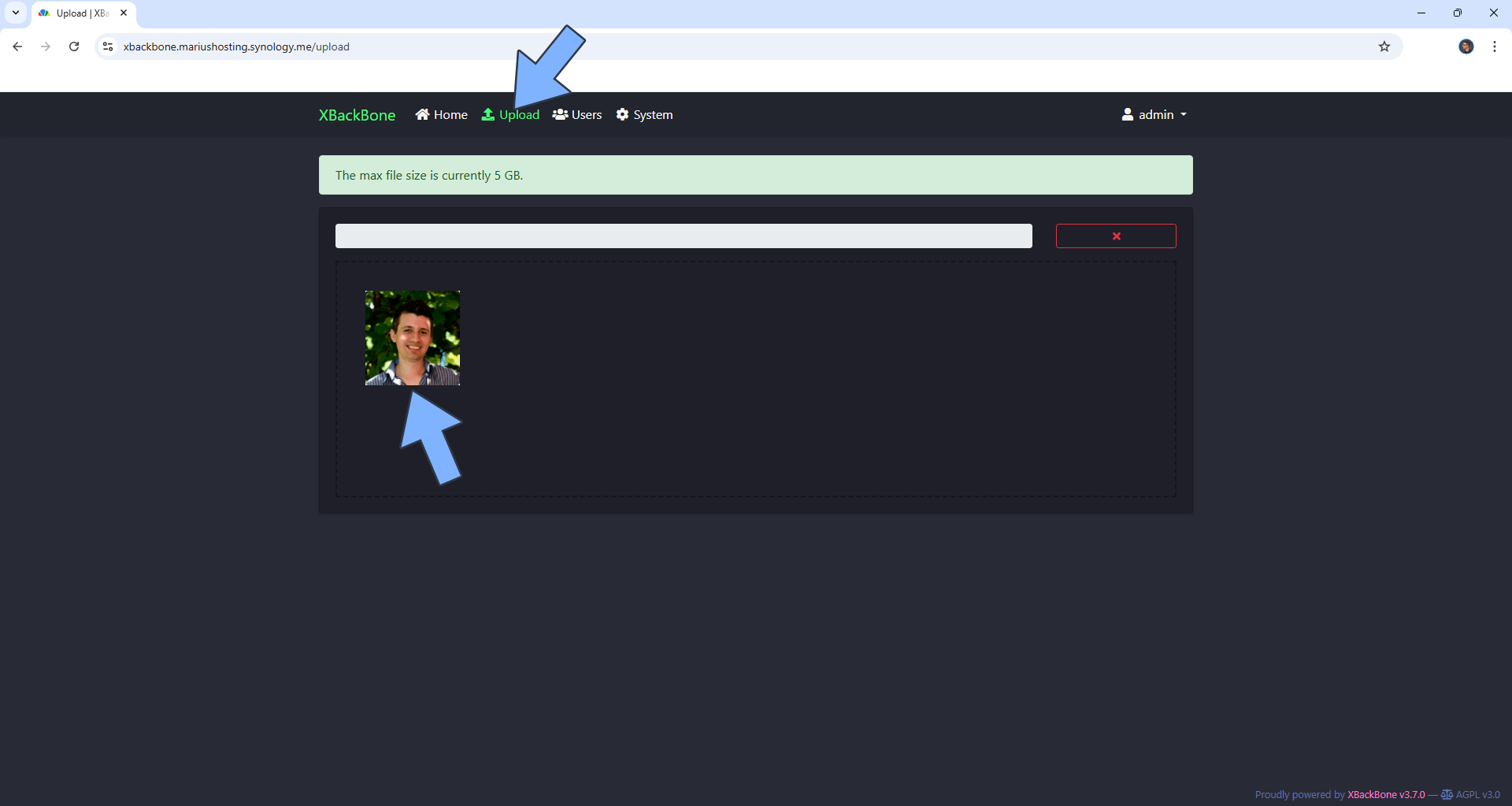
STEP 25
Go to the Home tab. Use the Copy link option and share your files with your friends. Follow the instructions in the image below.
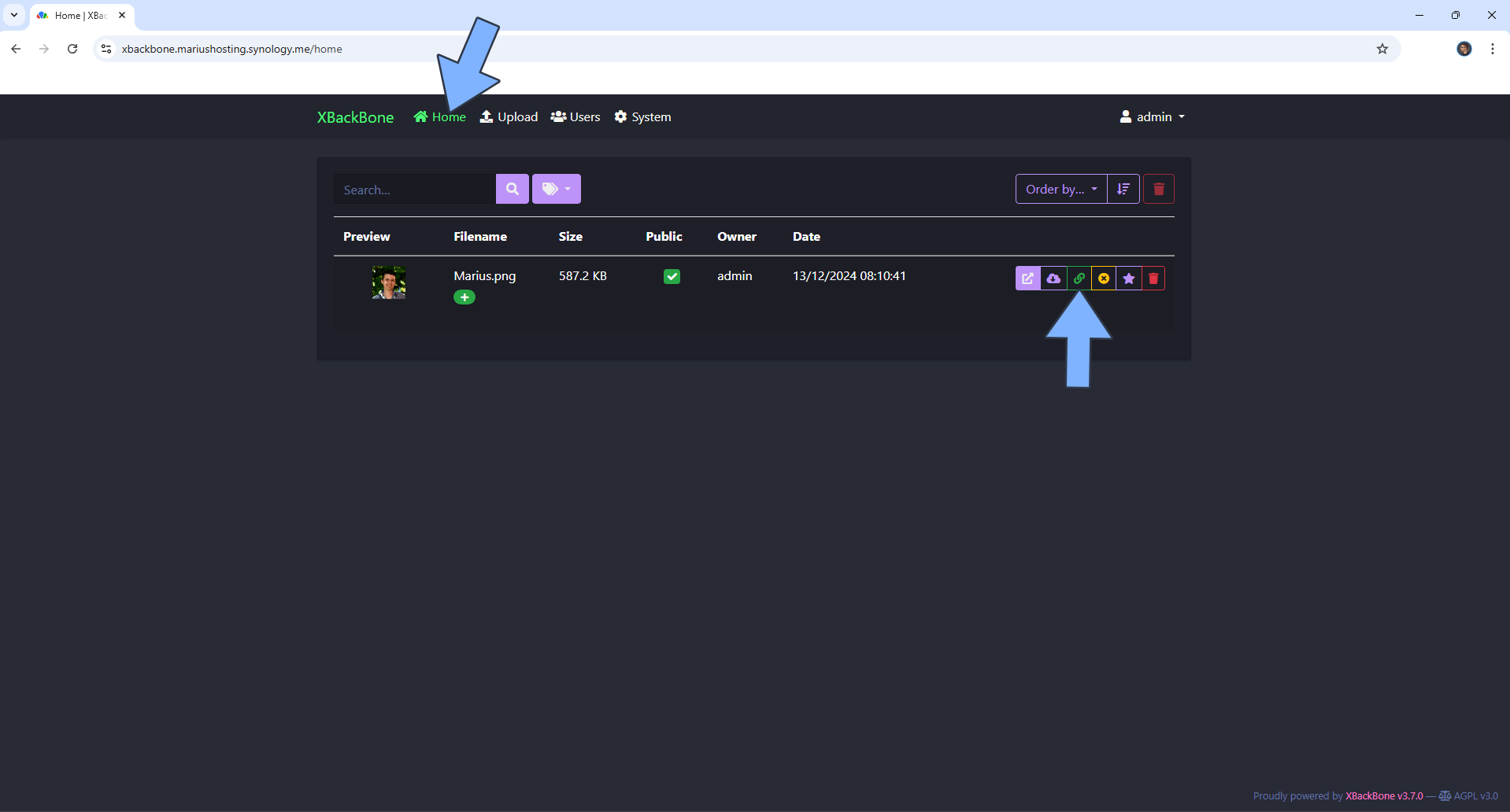
STEP 26
Share your file!
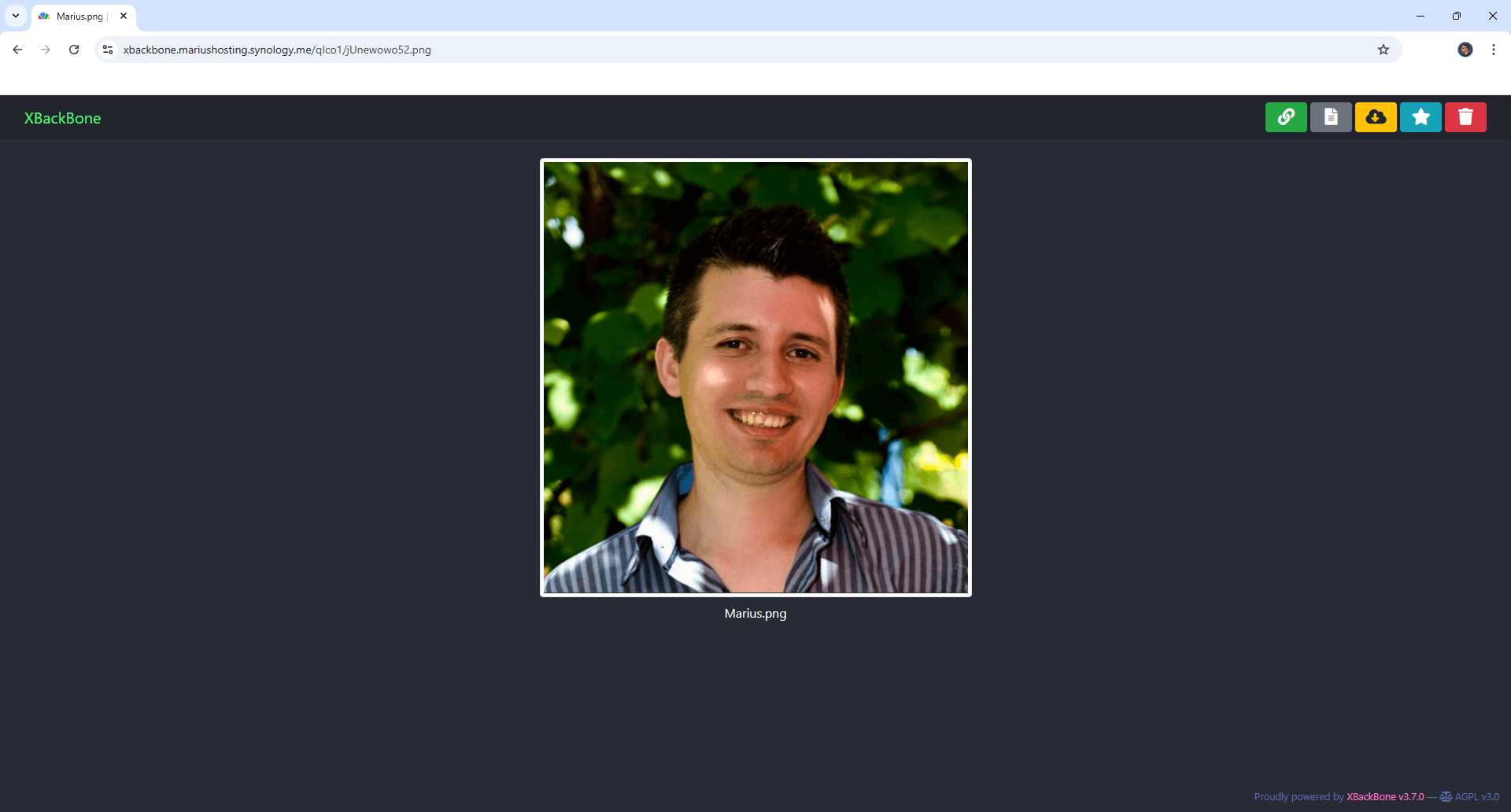
Enjoy XBackBone!
If you encounter issues by using this container, make sure to check out the Common Docker issues article.
Note: Can I run Docker on my Synology NAS? See the supported models.
Note: How to Back Up Docker Containers on your Synology NAS.
Note: Find out how to update XBackBone container with the latest image.
Note: How to Free Disk Space on Your NAS if You Run Docker.
Note: How to Schedule Start & Stop For Docker Containers.
Note: How to Activate Email Notifications.
Note: How to Add Access Control Profile on Your NAS.
Note: How to Change Docker Containers Restart Policy.
Note: How to Use Docker Containers With VPN.
Note: Convert Docker Run Into Docker Compose.
Note: How to Clean Docker.
Note: How to Clean Docker Automatically.
Note: Best Practices When Using Docker and DDNS.
Note: Some Docker Containers Need WebSocket.
Note: Find out the Best NAS Models For Docker.
Note: Activate Gmail SMTP For Docker Containers.
This post was updated on Sunday / February 9th, 2025 at 2:04 PM
